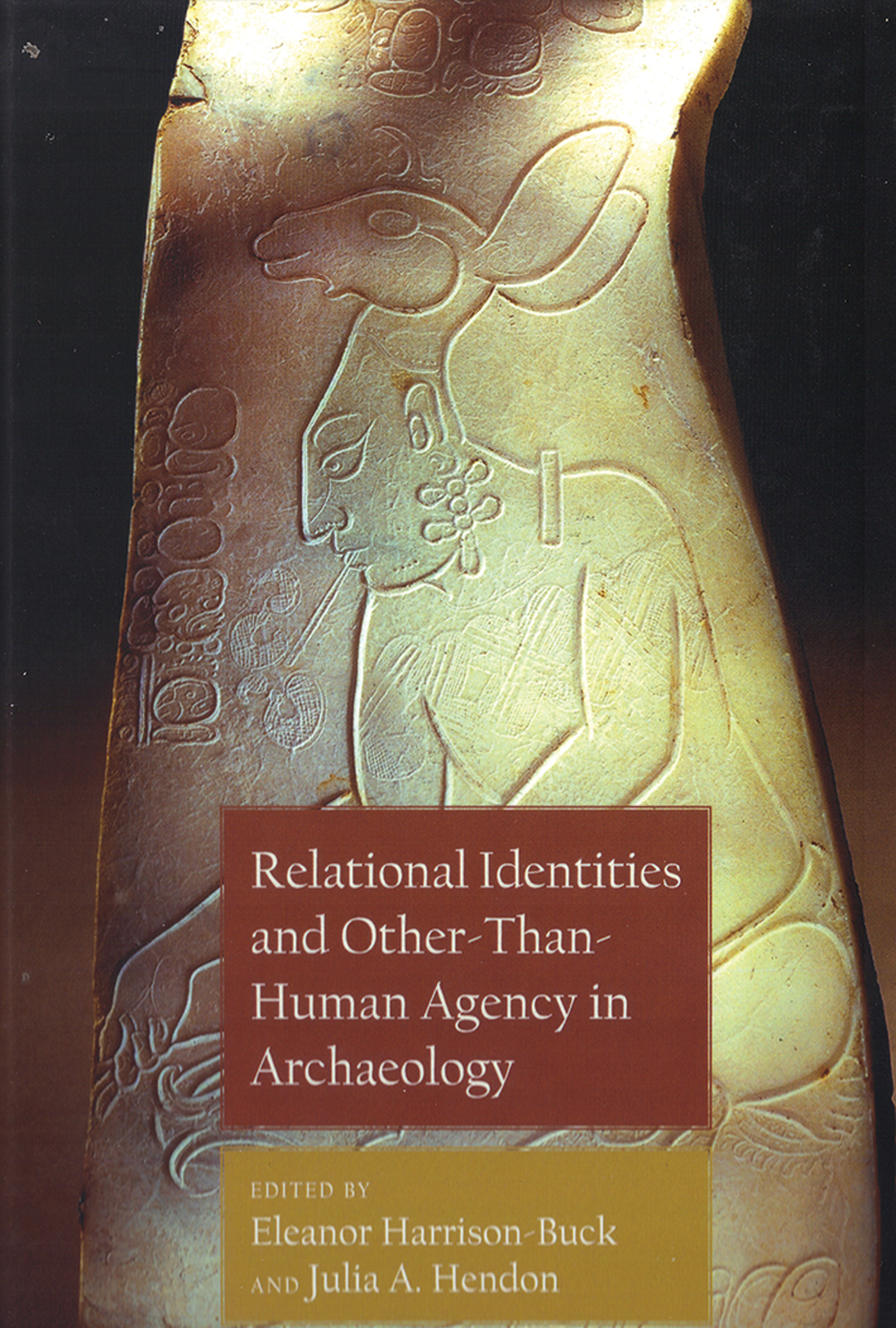
This important volume positions itself within the relational turn, a movement currently taking centre stage in archaeological theory. It focuses on the nature of agency and its relationship to personhood. Whereas agency (the capacity for action) and personhood (the quality of being a person) were previously perceived as solely belonging to human beings, relational approaches now extend these to non-humans as well. This volume explores how this works in different historical contexts, and how we can investigate this as archaeologists.
Ten case studies follow the editors’ theoretically focused Introduction. The first six deal with a range of examples from North and Central America. Erica Hill examines Eskimo interactions with other-than-human persons, emphasising how sea mammals could acquire personhood, but also the existence of non-social agents who did not acquire the status of persons. Meghan Howey explores the introduction of copper kettles into indigenous worlds in north-west Canada. Situating the kettles within local ontologies allows her to offer a clever re-analysis of how and why they end up in burials. Timothy Pauketat and Susan Alt explore the relations that formed the Cahokian world. Taking an approach explicitly influenced by the philosophy of Gilles Deleuze, they offer a new materialist account tracing both local understandings and practices, and also the properties of specific materials. The ways in which feathers operated within Indigenous groups on the North American Plains are reconsidered by María Nieves Zedeño, Wendi Field Murray and Kaitlin Chandler. They engage with complex relations through which feathers moved, and how this challenges the standard gift/commodity dichotomy. Examining the ancient Maya, Matthew Looper seeks to develop a local account of agency and personhood through the examination of hieroglyphic inscriptions, iconography and material culture, while Julia Hendon examines how tools could acquire personhood through involvement in human projects.
The remaining chapters leave the Americas behind. Ian McNiven draws on a range of ethnographic and historical sources to argue for the animacy of Torres Strait canoes. A detailed examination of archaeological contexts in Ghana is conducted by Ann Stahl. Stahl develops a convincing argument that associates metal rings and bangles with pythons, whose bones are also found in the mounds that she describes. This chapter offers a powerful examination of how material relations ‘compose’ particular citations of the personhood of both humans and non-humans. Finally, Joanna Brück and Andrew Jones examine the inclusion of fossils in British Early Bronze Age barrows. They argue, in contrast to dominant accounts that reduce all objects in barrows to status indicators, that grave goods are instead citations that forge relations between multiple elements of the world, and challenge Western divisions of nature and culture.
Eleanor Harrison-Buck concludes the volume by seeking to modify some of the claims made by the ontological turn. She is concerned both by the emphasis placed on ‘alterity’ (or radical difference) by some elements of this approach, and the ways in which others downplay the cognitive and mental aspects of human existence.
This is a welcome volume that adds much to our understanding of the different ways in which agency and personhood can become distributed. It also forms a useful teaching aid for students trying to conceptualise different kinds of past worlds. While there is little to criticise, there are, I think, two matters of concern. The first, as the editors note, is the common reliance on ethnography. Indeed, some of the papers include little in the way of archaeological examples at all. The use of ethnography to destabilise interpretations and allow other voices to guide our understanding is unquestionably welcome. If we determine local ontologies, and who counts as a person, primarily through ethnography and not archaeology, however, what does this mean for someone working in European prehistory, for example? Fortunately, there are chapters that help to answer this question including those by Stahl, Pauketat and Alt, and Brück and Jones.
The second, related, concern is connected to the status of ontology within the volume. Archaeology's ontological turn argues that our investigations can be about the world as it actually is, rather than what people think the world is. An ontological commitment, therefore, is an approach that opens up a reconsideration of how the world works from first principles. This, of course, can be taken in multiple different directions from discussions of local ontologies (exemplified by Yvonne Marshall and Ben Alberti's work), to broader meta-ontologies (developed both by new materialists and symmetrical archaeologists). In many of the papers in this volume, however, ontology remains at the level of cosmology or cultural claims. So we learn of how things can influence people once they ‘acquire’ personhood, or how people ‘enable’ their agency. The notion that things or materials affect the world because this is how the world actually operates is not always present. There are three notable exceptions to this. McNiven makes explicitly clear that the animacy of the Torres Strait canoes is not a consequence of human intervention, but rather that such action enhances capacities already inherent in the materials. Similarly, Brück and Jones argue in Deleuzian fashion that the assemblages of materials in graves acted “as a means of ‘mapping’ the world” (p. 247) and thus constructing it. Finally, Pauketat and Alt take a new materialist approach in order to generate an account of a critical period of the past that neither reduces human beings to the status of unthinking actors, nor accords materials the ability to shape the world only when people believe they do so.
These matters of concern, however, should not detract from the volume as a whole. This book offers us a set of theoretically engaged and fascinating papers that are a pleasure to read. There is much to learn and reflect on here, and each paper shows that an emphasis on relations in specific historical contexts has much to teach us about how humans and non-humans make their worlds.


